Dataframe (borrowed from here):
df.test <- data.frame(id = rep(1:6, each = 50), x = rnorm(50*6, mean = 10, sd = 5),
y = rnorm(50*6, mean = 20, sd = 10),
z = rnorm(50*6, mean = 30, sd = 15))
Plot:
library(ggplot2)
ggplot(df.test, aes(x)) + geom_histogram() + facet_wrap(~id)
Request for assistance: I'd like to superimpose onto each of the facets the histogram of the entire data, to provide immediate comparison of each facet with the total dataset, if possible I'd like the whole dataset shown as a freq_poly():
ggplot(df.test, aes(x)) + geom_freqpoly()



